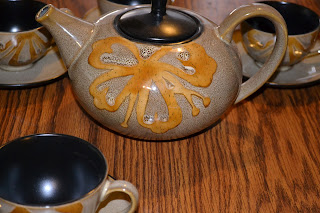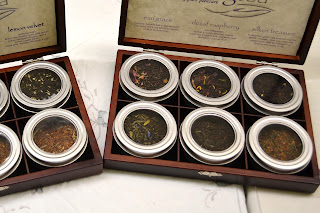If you steep your tea for a long time, you may notice a bitter, astringent aftertaste. This is causes by tannins, naturally occuring substances that are also found in wine and chocolate. And interestingly, in rooibos, an herb also known as "bush tea," pictured below. This herb does not come from the same plant as true teas, but it does have many of the same characteristcs.
These are not the same as the tannic acid used for preserving leather (those acids are extracted from oak leaves.) Rather, they are antioxidant-rich bioflavonoids, as well as catechins (which may help you loose weight). Everybody wants more antioxidants, right? And to get the most benifit, many sources claim you need to be drinking 8 cups of green or black tea a day (as the different varieties contain different phytochemicals, only some of which are tannins).
There is one possible concern. Tannins may interfere with iron absorbtion, but this is only something to worry about if you are restricting iron intake (such as if you are vegetarian/vegan) or if you are anemic.
Tannins are also thought to kill bacteria in your mouth an help prevent bacteria, so if you don't have iron issues, the more unsweetened tea the better.
Some cultures steep tea to intentionally extract more tannins. An example of this is Thai-style tea, which is steeped for about twenty minutes. It begins to take on a character similar to coffee, and is then sweetened with a large dose of condensed milk. This concoction is uaually served iced, and it is only for those with a high tolerance to sweets.
.JPG)








.JPG)







.JPG)





